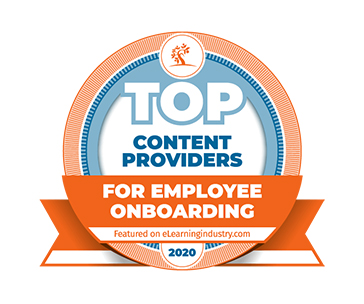According to several surveys, training delivery for remote personnel has proven crucial during this pandemic crisis. Therefore, businesses are depending more on a virtual environment which has become intuitive for almost everyone. Although some organizations are slowly reincorporating their staff to an office environment, the majority are keeping staff remotely. This move has created a need for virtual training and development programs that can be used long-term.
Training delivery and content development continue to be the two most outsourced services. Adopting technology is the solution as businesses choose to upskill their personnel virtually.
Many companies are rethinking training delivery by implementing suitable training that will keep employees fulfilled and achieve the company’s goals.(1) Organizations are looking beyond the basics and transforming their workplace training and learning. For learning and development programs to be successful in this new environment, they must address the staff’s well-being and skills training. Facilitating courses virtually also enables partners to keep training interactive as much as possible, using tools such as breakout groups.
Benefits of Training Delivery for Remote Workforce
- One irrefutable benefit of training remote workers is the continuity of operations. Investing in technology and content allows for improved conditions for remote staff. This translates as dealing with less absenteeism, lower productivity, or operation problems for lack of skilled resources.
- So far, the success of training remote personnel has shown that employees perform better in more comfortable surroundings. Feeling safe in a familiar environment helped their overall mood and thus increased their motivation. There is a general improvement in staff morale.
- Another benefit is the overall progress of company performance. Facilitating the right courses leads to better-trained employees. This, of course, impacts the company’s profit margins and performance positively.
- This type of training also increases employee retention. Being trained at their pace and on their schedule boosts employees’ morale. This, in turn, increases their confidence when handling more responsibilities. These benefits increase employee reliability and lower company costs around firing, hiring, and re-training new personnel.


Overcoming Remote Training Challenges
Even in times of uncertainty, such as at the onset, during, and after the pandemic, there are many opportunities for growth, development, and positive changes to make a company and its infrastructure even stronger than before. As long as companies implement strategies to map out the next phase and ensure adequate remote employee training practices. Creating a supportive and engaging virtual learning experience may sound challenging but employing best training practices for the remote workforce will help you overcome obstacles and succeed.(2)
The bottom line is that even though businesses across the globe were impacted by the pandemic and have struggled to remain afloat, they have to stay optimistic. They must embrace the challenges and find the opportunity to enhance remote training practices, provide better employee reskilling and upskilling, make sure that technology and platforms used for collaboration are at the forefront of the changes they make, and finally by connecting all those initiatives with countless of business and performance data points businesses.
Conclusion
COVID-19 has forced the need for a specific strategic employee training plan. Therefore, the transition to remote working created a particular challenge for office learning providers. Fortunately, training providers, today can deliver a hands-on experience to remote personnel using different platforms. Technology is the new ally for the remote workforce as it offers flexibility and engaging options to suit learners.
Remote training doesn’t just speed up learning; it boosts productivity. Employees can access the tools and seek relevant knowledge to uncover their effective ways of using technology and enjoy more adaptability and less supervision, which creates an operational advantage. To know more about how you can drive performance and outcomes with training, watch the webinar replay: Instructor’s Guide to Delivering Virtual Training.



































